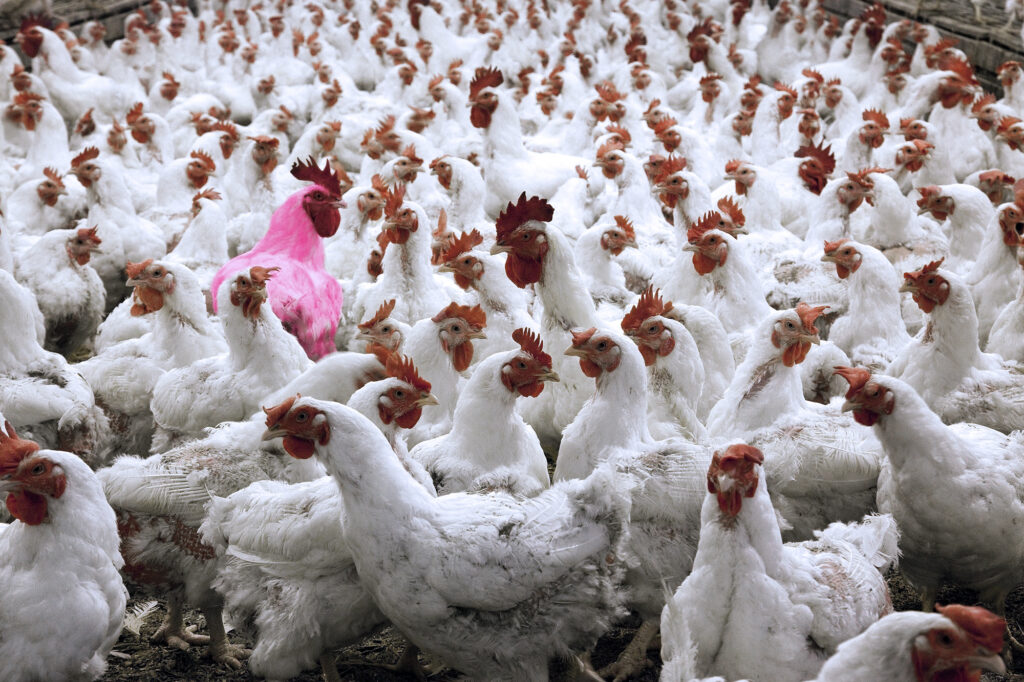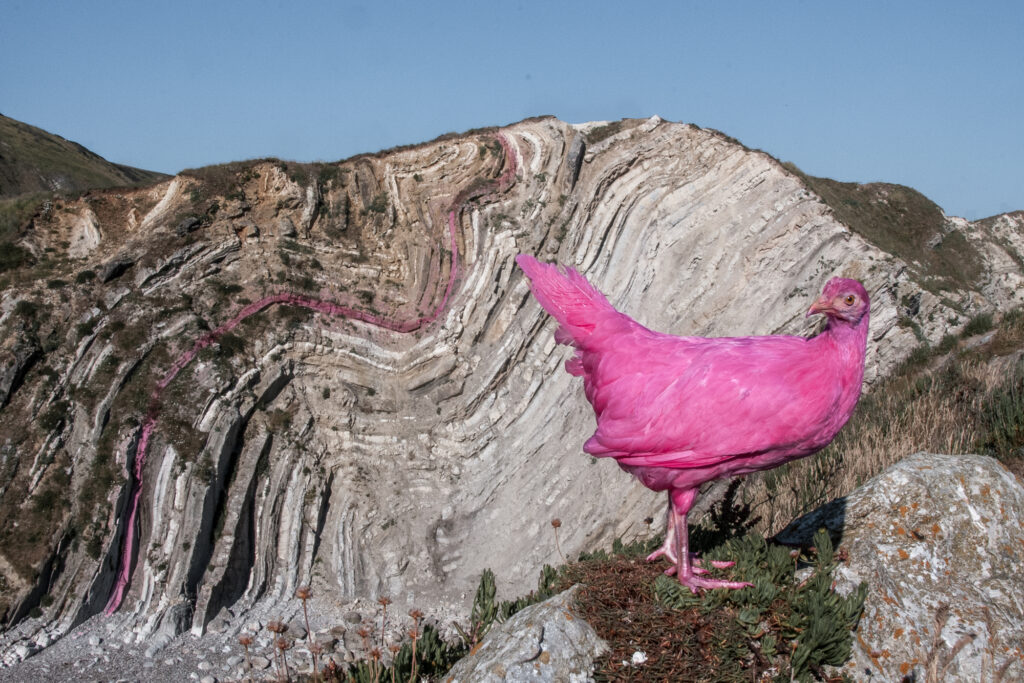Can Pink Chickens Become the Fossil Record of the Anthropocene?

VISION: By encoding the DNA of today’s chickens with messages—and genes to turn their bones pink—they become biomarkers of humanity’s impact on the earth, eventually fossilizing to leave a geological layer of pink traces on the planet’s crust.
TEAM: Leo Fidjeland and Linnea Våglund
SCHOOL: Central Saint Martins, 2017
Chickens are the most prevalent bird in the world—and approximately 60 billion are killed for food every year. Along with other traces of the Anthropocene era such as plastics pollution, soot from power stations, and nuclear fallout, these chicken bones are fossilizing in the Earth’s strata.
As a way to warn Earth’s future inhabitants about human-inflicted environmental destruction, social injustices, and political immorality in the Anthropocene, the Pink Chicken Project proposes changing the color of the birds’ bones and feathers to pink. Using the genome-editing tool CRISPR, genes from the cochineal insect are inserted into the chicken, producing a pink pigment when combined with calcium in the bones.
Modifying the chicken in this way creates a “gene drive,” which can reproduce itself across future generations, permanently altering the species in only 12 to 19 generations. These physiological changes are both safe for the chicken and nontoxic for human consumption.
Not only will future chickens be pink, but their DNA will contain a message encoded into the genetic code’s As, Ts, Gs, and Cs that begins: “We, the humans of planet Earth, write this message at the beginning of the Anthropocene….”
The team ended its presentation with an imagined marketing plea to “help us accelerate this effort by ordering your own pink egg,” to demonstrate that the future of humanity is no longer in the hands of the world’s biggest corporations and most powerful militaries “but also in yours.”




